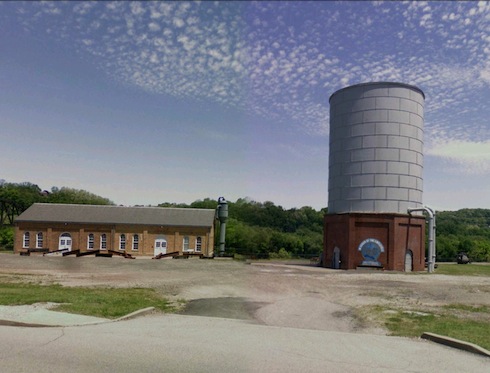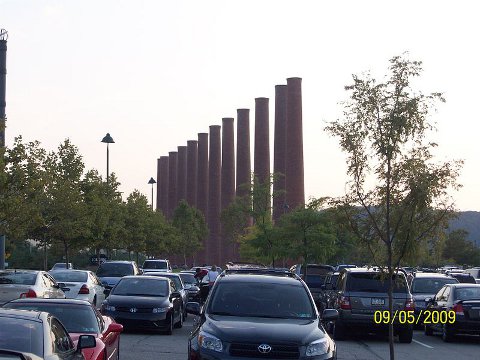


Framed or unframed, desk size to sofa size, printed by us in Arizona and Alabama since 2007. Explore now.
Shorpy is funded by you. Patreon contributors get an ad-free experience.
Learn more.

- Details, Details
- What's that building to the left of the tower?
- Coal Barges
- Bromo-Seltzer
- Inner harbor
- The Basin
- What a headache!
- Giant stepladder?
- Baldwin 62303
- Baldwin VO-1000
- Cold
- No expense spared
- Tough Guys
- Lost in Toyland
- And without gloves
- If I were a blindfolded time traveler
- Smoke Consumer Also Cooks
- Oh that stove!
- Possibly still there?
- What?!?
- $100 Reward
- Freeze Frame
- Texas Flyer wanted
- Just a Year Too Soon
- WWII -- Replacing men with women at the railroad crossing.
- Yes, Icing
- You kids drive me nuts!
- NOT An Easy Job
- I wonder
- Just add window boxes
Print Emporium
Homestead Steel Works: 1910

Homestead, Pennsylvania, circa 1910. "Homestead Steel Works, Carnegie Steel Co." Lots of interesting details in this humongous panorama made from four 8x10 inch glass negatives. Detroit Publishing Company. View full size.
Homestead 1910
My gt, gt aunty, Bridget Monaghan, after leaving Ireland, and living for a while in the English iron/steel towns of Tow Law, and Consett, both in Co Durham, moved to Homestead. She married a Mr Mulvihille and appears on the US census in 1910 as Bridget Mulvihill, a boarding housekeeper at 449 Fifth Avenue, Homestead, Allegheny Co. Pennsylvania, her boarders were Irish steel workers. Margaret Byington's book, Homestead, Households of a Milltown (1909) can be viewed at https://archive.org/details/pittsburghsurvey04kelluoft
It contains some interesting photos and text
Modern Day GPS
Based on the photo here are the modern day coordinates:
40.404657,-79.917816 - Smoke Stacks (not photographed in the original photo as it is to far west) now the mall area
40.412869,-79.896812 - Water Tower
40.414367,-79.897579 - Steel bridge seen in background crossing river to right
40.407933,-79.901839 - Approximately where the photo must have been taken from based on houses, distance to mill, distance to water tower, and distance to river.
40.412545,-79.899542 - Where the over-head framework for loading steel use to be. There is zero trace of anything ever having been here now.
40.408946,-79.90495 - Where the RR use to curve into / towards town. Now 8th Avenue.
Re Model Train set, huh?
And his wife wonders why the lawn never gets mowed.
Model train set, huh?
Check this out! http://www.tacoma-trains.com/bobspage.htm
Much still remains
If you stroll on over to Google street maps and browse the area between Ravine Street and Munn Street on Homestead's east end, you'll find many buildings clearly recognizable from the far right corner of this fantastic panorama.
Re: Fireless Engine
It wasn't a question of dirtying up things with smoke and cinders of course, although that was why they were frequently used around food production factories. The other benefit is that it doesn't produce sparks or cinders that could ignite flammable materials, for example coke which was used in the steel making process.
Fireless engine
To the right of the crooked telephone pole can be seen a fireless steam engine working the plant. These where common industrial engines, being charged from a stationary boiler. Wouldn't want the smoke and cinders of a conventional engine to dirty the place up.
And then there is the image
of home town America -- back in the day.

Still remaining
The octagon based water tank in the middle upper portion of the photo remains as well as the small building just to the left of the tank. Remaining at least in foot print is the large building to the right of the water tank though it has been largely modified.

Model Trains
I think this would make a really cool blueprint for a model train set! It would take years to build of course.
Wonder what that person behind that shade in the near left house was doing?
N, HO, or O?
This would make an AWESOME model railroad!
I wonder which office was Uncle Chuck's?
One of my mother's ancestors was married to Charles Schwab (no connection with the present day C. Schwab) who, at age 35, became the president of Carnegie Steel in 1897. In 1901 he was involved in the sale of Carnegie to a bunch of NYC moneymen including J.P. Morgan, and in turn Schwab became the president of U.S. Steel, the corporation formed from the sale. Later he headed Bethlehem Steel. Worth at one time $500 million to $800 million in today's dollars, dear old Uncle Chuck managed to die broke, his Bethlehem Steel stock value tanking in the Great Depression. In the 1980s when BethSteel was sold to avoid bankrupcy, 19 heirs each pocketed $40 million. I've been meaning to ask my Mom if she was one of them.
A perfect summer day
to hang the laundry on the clothesline and take a ride on an open air "toastrack" trolley car (far right).
Ladies and Gentlemen
We now introduce you to Pennsylvania's newest subdivision "Homestead Hills" with a breathtaking view of the steelworks and other related industries, no smoking please.
The State of the Art
in 1910 theorized that heavy smoke from steel plants might have caused refraction of longwave radio signals along the earth's surface, permitting communications beyond line-of-sight from Pittsburgh (and other big steel towns). The idea was quickly disproven.
A hundred years from Homestead
My uncle was born in Homestead in 1907 and was buried on what would have been his 101st birthday. Thank you for posting this wonderful picture of his old home town, pictures of which I had never seen before. Simply amazing to see Homestead as it appeared when my uncle was barely 3 years old.
Give me a week
to decipher all that is going on in this huge image. From the grocery wagon, and the guy reading the newspaper on his front porch, to the brave souls on the factory's shed roof, applying some sort of paint or sealant to it. I wonder if anything from this image is left after 102 years?
I believe that's East 10th street
The houses haven't changed much. And I think that's just swell.

And YES! This is one for the wall
I'll be ordering my copy soon.
It's a very different view
from my window today, but some of the stacks still remain and Edgar Thompson burns bright and sends up smoke signals from down the way. Glad to be able to look back, but my lungs and eyes are happy we've moved on.
Once a mighty mill
And now nothing more than a shopping mall. Twelve of the old brick smokestacks have been preserved though.

























On Shorpy:
Today’s Top 5